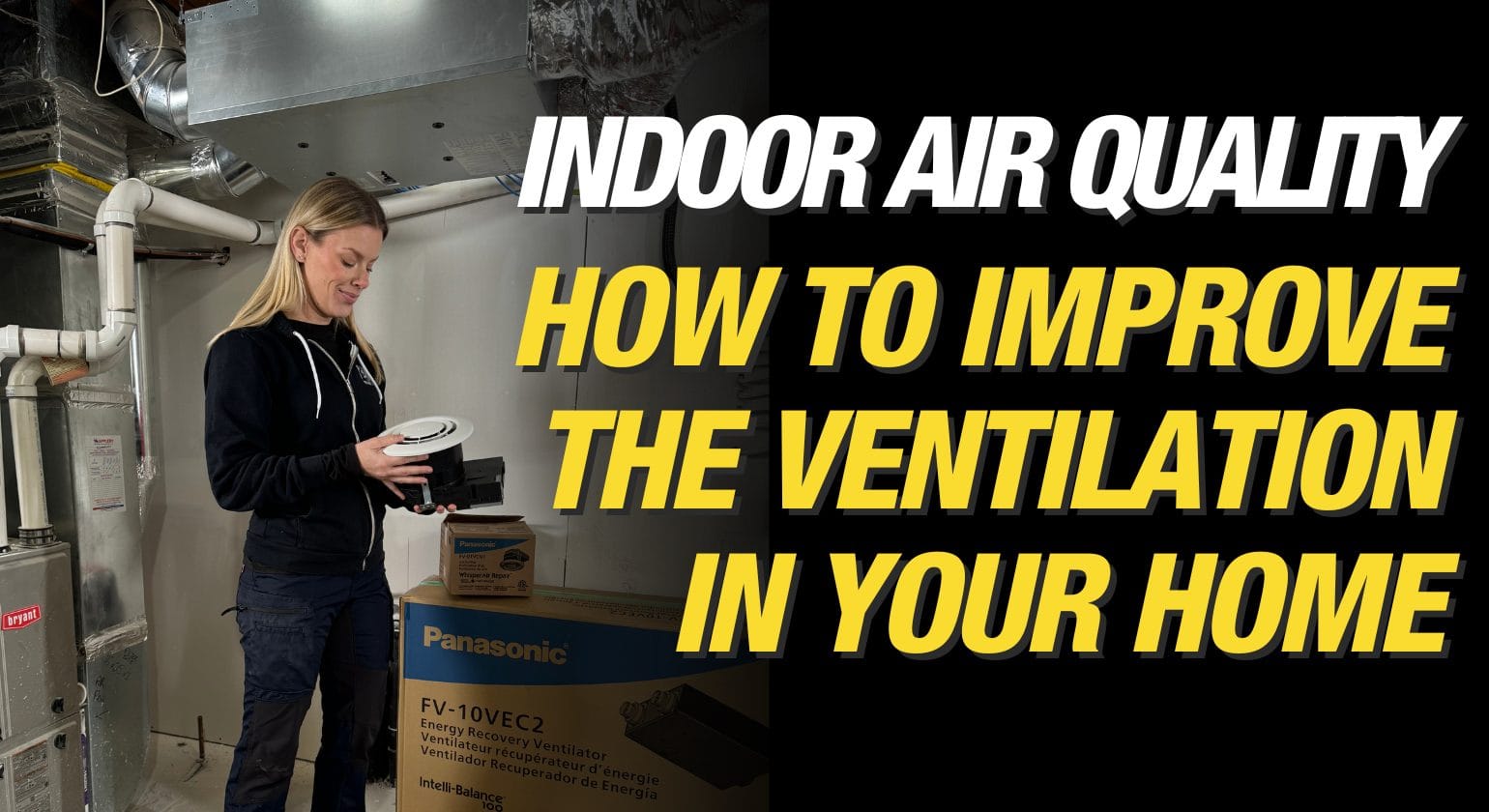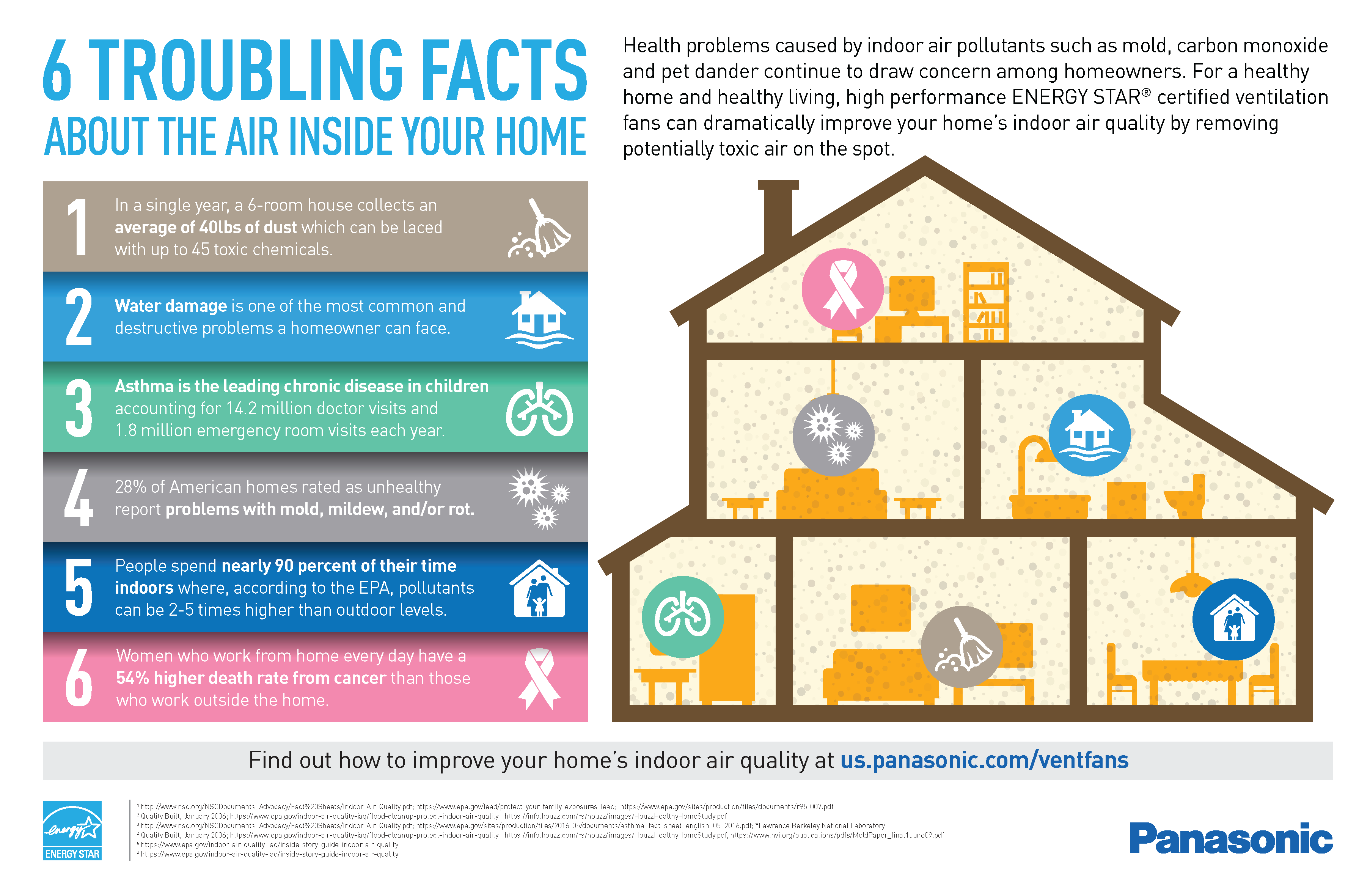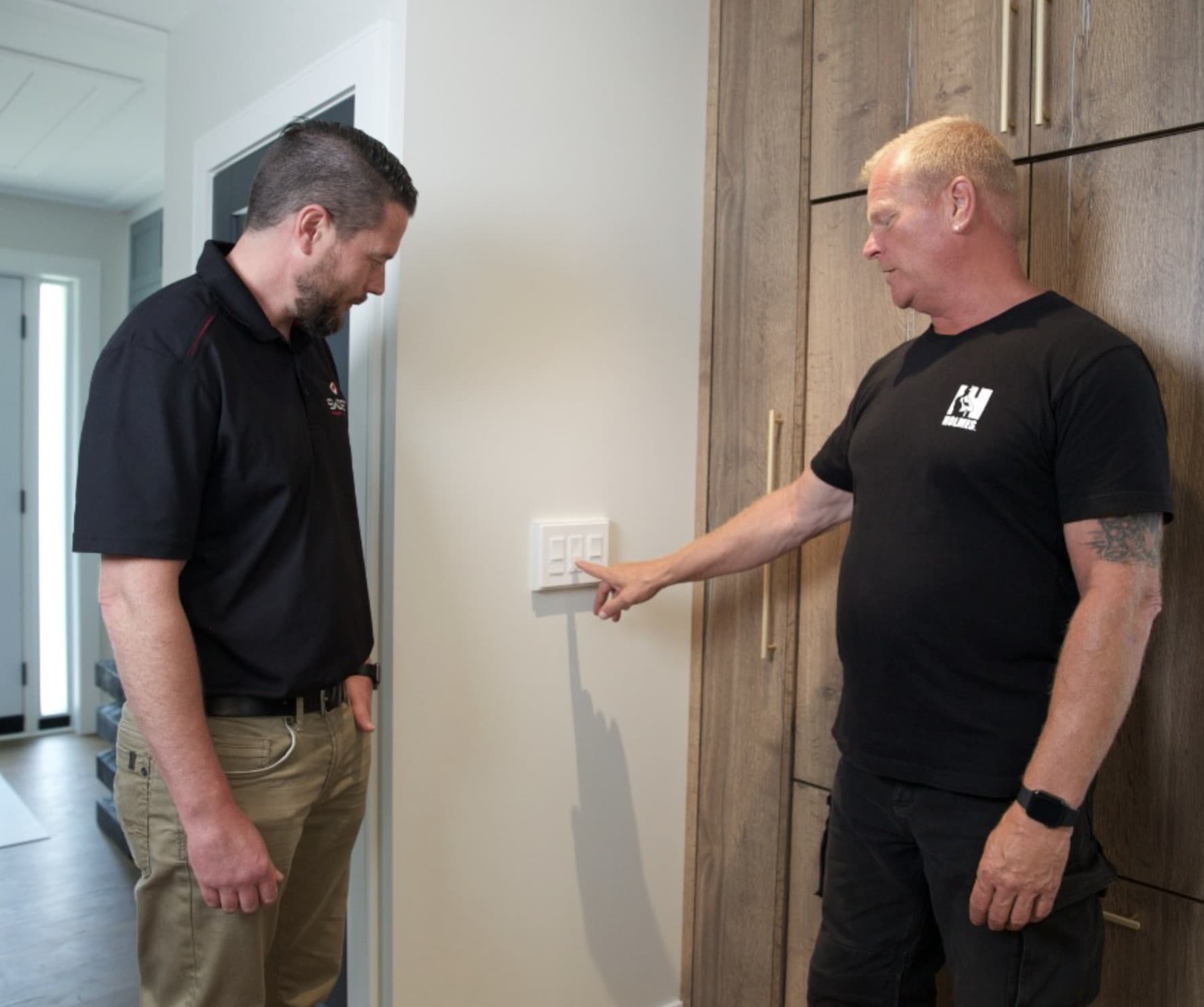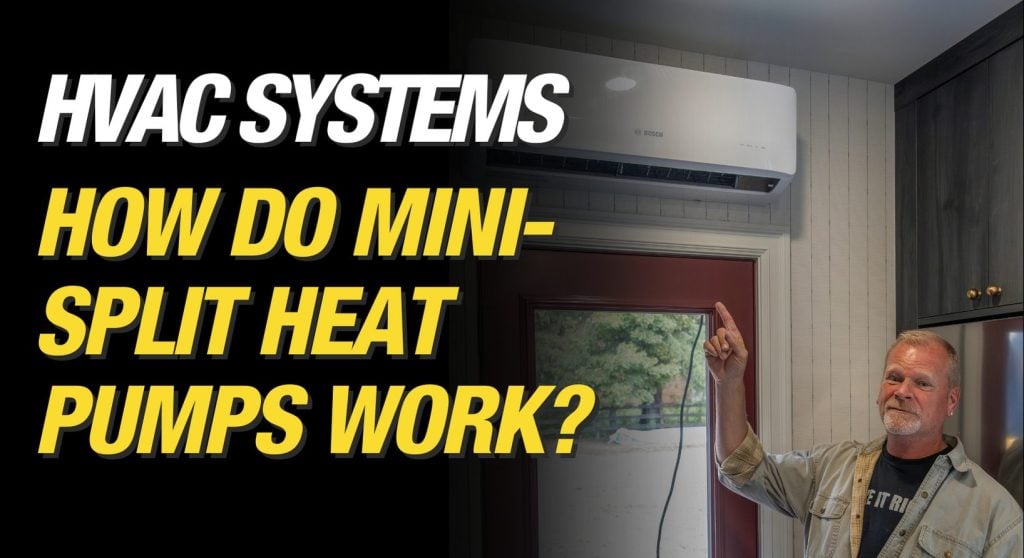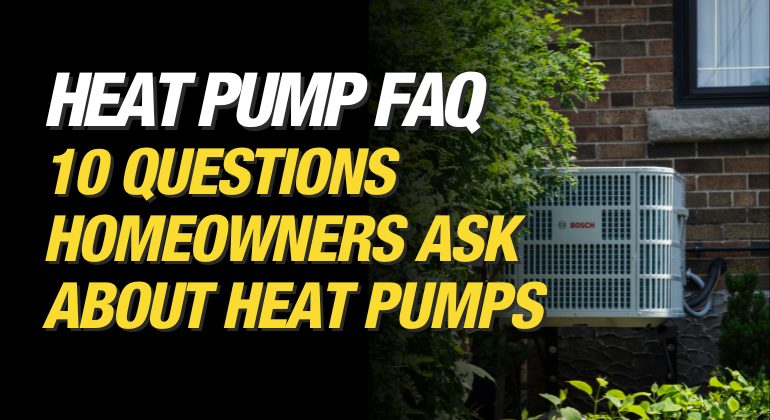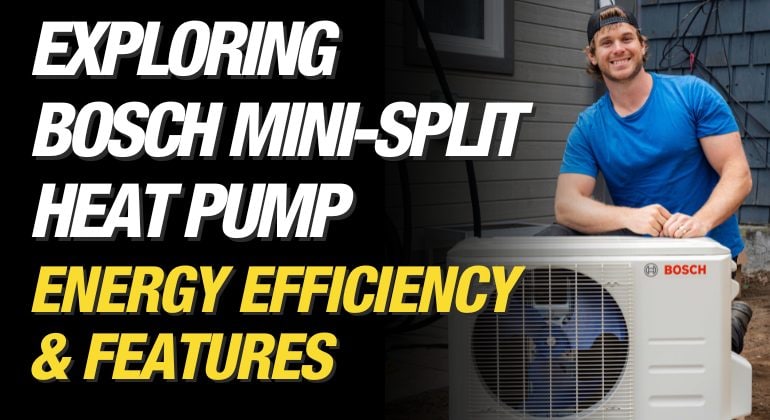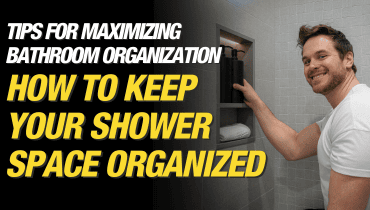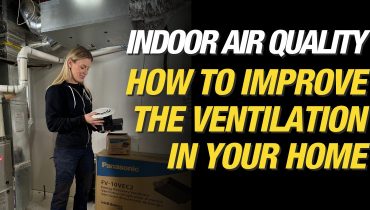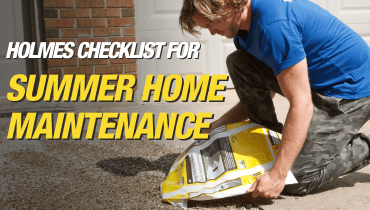HOW TO STAY ORGANIZED IN A SHOWER Keeping your bathroom organized can be a challenge, but with the right strategies and storage solutions, you can transform your shower area into...
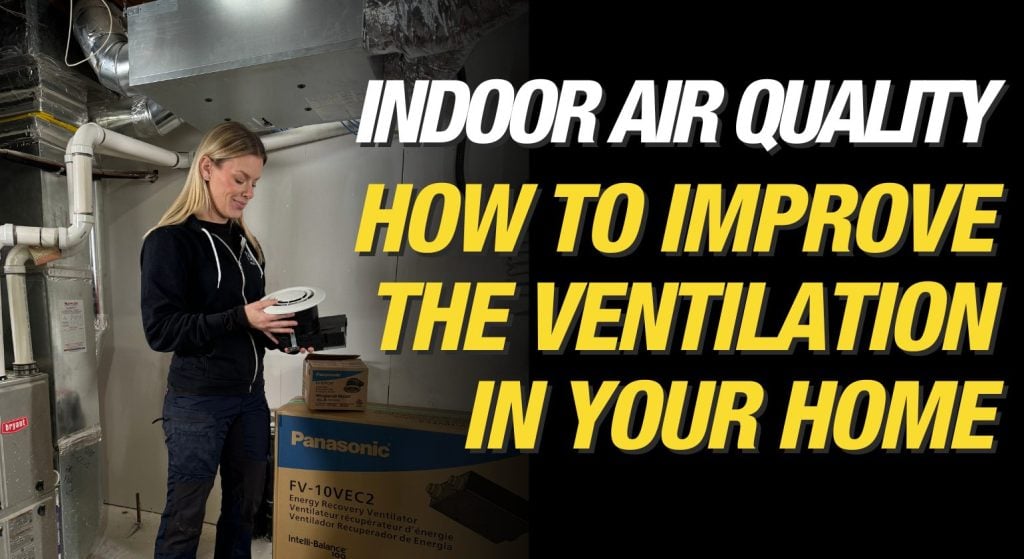
How To Improve Ventilation In Your Home
By Mike Holmes
Mike’s Advice / Home Renovation
Monday, March 18th, 2024 @ 2:37pm
How Does Home Ventilation System Work
Builders today construct new homes much more “air-tight” than before. This is great for energy efficiency. However, an “air-tight” home can also create other issues, like mould and poor indoor air quality. Proper ventilation in your home and “fresh-air” flow are important for our homes to be healthy. Just like us, our homes need to breathe, but more importantly, they need a balanced exchange of fresh air. Moisture and mould are an issue when construction is too tight and ventilation is inadequate.
A good ventilation system improves air quality, saves energy, controls moisture, and makes the home more durable.
How Can Our Homes Breathe?
While windows and doors allow airflow, airtight homes rely on specific pathways to let air enter and exit:
- Building envelope openings: Small gaps around windows, plumbing, and where walls and floors meet.
- Controlled ventilation systems: These are essential for maintaining balanced air exchange and healthy IAQ.
Our homes don’t just need to breathe. Airtight homes need a balanced ventilation system. This means fresh outdoor air enters, and expels stale air.
RELATED:
What Is Air Balancing?
Air balancing is an important part of your HVAC system. This means testing your heating and cooling system to find and fix problems with uneven airflow or negative air pressure.
The balancing of an HVAC system will reduce uneven temperatures throughout your home while maximizing comfort and conserving energy. A licensed HVAC technician should do this once a year for the best results.
Building Airtight Homes
An excellent quote from one of my Holmes Approved Homes builders resonated with me — “BUILD IT RIGHT, VENTILTATE IT RIGHT”. When we build airtight homes, we build a bubble that protects us from all those outdoor contaminants. That’s why an HRV (heat recovery ventilator) or an ERV (energy recovery ventilator) is so important. It creates that fresh air delivery system for every home in your house.
If you are doing a significant renovation, this is a great opportunity to make your building enclosure airtight. Then you should think about a holistic approach to whole-home ventilation. Opening your windows every day isn’t practical, but you do want fresh air coming in.
Building code in Canada now requires balanced ventilation. All you have to do is step it up marginally to ensure balanced ventilation and indoor air quality monitoring. Energy Efficiency and the building code are now specifically requiring us to build a more airtight house. This means we need a ventilation system that exhausts indoor air and brings in the same amount of air from outside.
Are Airtight Homes Unhealthy?
We rarely think about the toxins in our homes unless we get some sort of a reaction. For example, coughing, itchy eyes, runny nose or worse some sort of breathing problem. These are all examples of poor indoor air quality.
Toxins are present in cleaning products, building products, carpets, paints and furniture. Breathing in VOCs (Volatile Organic Compounds) over a period can cause headaches and dizziness.
In an airtight home with no air exchange system, these pollutants just stay trapped in the house. If you are renovating, go for products that contain low or no VOCs.
I love that contractors, builders and product manufacturers are recognizing the importance of indoor air quality. The answer to improving indoor air quality in airtight homes is mechanical ventilation systems.
What is Mechanical (Whole-House) Ventilation in Homes?
Mechanical whole-house ventilation removes stale, moist, polluted air and replaces it with fresh outside air in your house.
Good ventilation means good indoor air quality. Simple. Eliminating indoor pollutants completely is close to impossible. That’s why mechanical ventilation is necessary to guarantee good indoor air quality.
Mechanical ventilation systems use ducts and fans to circulate fresh air. They do not rely on airflow through small holes and cracks in the home’s structure.
One of the best ways to create this air exchange is investing in an energy recovery ventilator (ERV).
How to Improve Indoor Air Quality
I recommend all homeowners invest in these solutions to improve the quality of the air you breathe in your airtight home:
- Invest in an Energy Recovery Ventilator (ERV) or Heat Recovery Ventilator (HRV): This is the most effective way to ensure balanced air exchange and energy efficiency.
- Install high-quality bathroom vent fans: Remove excess moisture to prevent mould growth.
- Consider air purifiers: These help remove airborne pollutants like dust and allergens.
- Choose low-VOC building materials: Reduce indoor air pollution from paints, carpets, and other materials.
I love the work Panasonic’s team has done in coming up with solutions for improving indoor air quality in homes.
RELATED
Energy Recovery Ventilators (ERV)
Energy recovery ventilation systems provide a controlled way of ventilating a home. An ERV can save on winter heating costs by capturing heat within the home and combining it with fresh incoming air from the outside. In the summer, the inside air cools the warmer supply air to reduce cooling costs. ERVs can exchange both heat and moisture.
You might be familiar with heat recovery ventilators (HRVs). ERVs also help manage moisture in your home. This means a COMFORTABLE indoor environment.

We’ve worked with Panasonic for years and we trust them to help us improve indoor air quality in the homes we work on. In this project, we installed the Panasonic Intelli-Balance 100 energy recovery ventilator (ERV).
Related
More information on ERVs and their benefits is in this article.
Here’s a the difference between ERVs and HRVs and which one is better for you
Air Purification in an Airtight Home
While ERVs and proper ventilation are essential for overall air quality improvement, air purifiers can address specific concerns like:
- Allergens: If you suffer from allergies or asthma, air purifiers equipped with HEPA filters can effectively capture dust mites, pollen, pet dander, and other allergens, providing significant relief.
- Volatile Organic Compounds (VOCs): Off-gasing from building materials, furniture, and cleaning products can release VOCs into the air. Air purifiers with activated carbon filters can help trap and remove these harmful chemicals, especially beneficial during renovations or in homes with new furniture.
- Odours: Cooking smells, pet danders, and other household odours can be effectively reduced by air purifiers with odour-absorbing filters.
It’s important to choose an air purifier with a capacity suitable for your home’s size and specific needs. Consider consulting with an HVAC professional to determine the most appropriate air purification solution for your airtight home.
I am a big fan of the Panasonic WhisperAir Repair air purification devices. I installed 5 of them in my own house. Here is more information on them.
RELATED
Panasonic WhisperAir Repair® Review: How Does This Air Purifier Work? We Tested it to Find Out!
Bathroom Vent Fans
By choosing a good quality exhaust fan, you will effectively eliminate the moisture in your bathroom.
Ventilation fans work to extract moisture buildup after taking a hot shower or bath. This helps to prevent moisture build-up on walls, ceilings, and fixtures, which can lead to mould growth, structural damage, and bad odours.
When choosing a bathroom vent fan, consider these factors:
- CFM (Cubic Feet per Minute) rating: Choose a fan with a CFM rating sufficient for your bathroom size (generally, 5 CFM per square foot).
- Noise level: Opt for a quieter fan (measured in Sones) for a more peaceful bathroom experience.
- Light and heating features: Some ventilation fans come with additional features like a light or space heater that offers convenience while enhancing ventilation efficiency.
By installing a high-quality bathroom vent fan and ensuring proper ventilation, you can create a healthier and more comfortable bathroom environment.
Here is a guide on how to choose a good bathroom ventilation fan.
Connected Solutions
I am a huge fan of smart technology for improving your indoor air quality. Smart controls for your ERV or vent fans offer convenient automation and ensure optimal performance.
Swidget Smart Controls, for example, allow you to control your Panasonic ERV or your Panasonic fan automatically. Set it and forget it.
You jumped into the shower, but your exhaust fan wasn’t turned on. Not a problem! The Swidget smart controls include sensors for temperature and humidity. It can switch on (or off) the fan without your help. Also, they can detect harmful substances in your air (such as VOCs). It automatically connects to Panasonic’s ventilation systems and takes control of them when it senses unhealthy air, allowing it to get rid of any pollutants, allergies, and bad odours.
RELATED
I think we’re going the right way with improved building rules, increased awareness, healthier home designs, and product advancements. Decades ago, the ventilation systems in older homes were just an exhaust fan and maybe a humidistat.
We have come a long way in understanding indoor air quality. Modern homes embrace airtight construction for energy efficiency, but a focus on balanced ventilation is vital for a healthy and comfortable living environment. By implementing some of these solutions, you can breathe easy in your airtight home.
Disclaimer: I only recommend products I would use myself and all opinions expressed here are our own. This post may contain affiliate links.
READ NEXT:
Panasonic Whisper Air Repair. How Does It Work to Clean Your Air?
